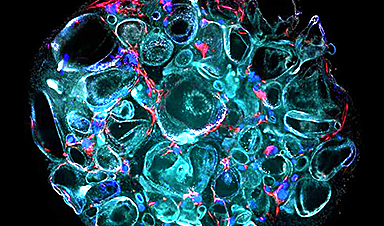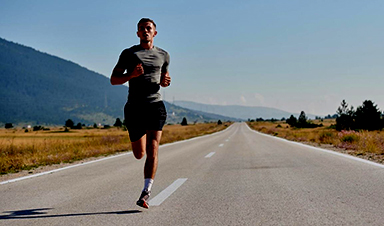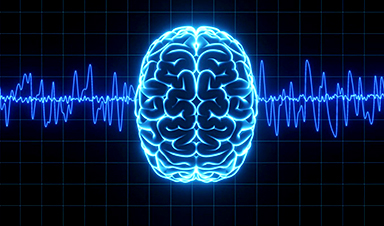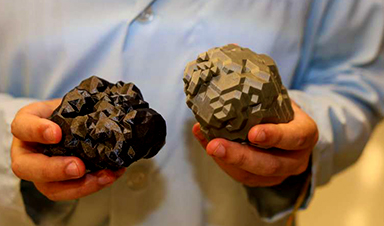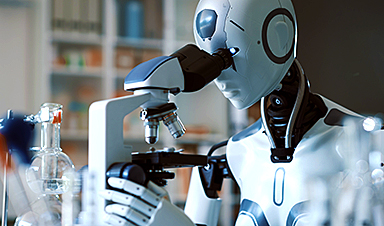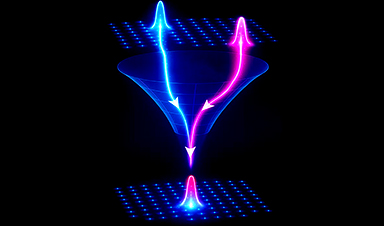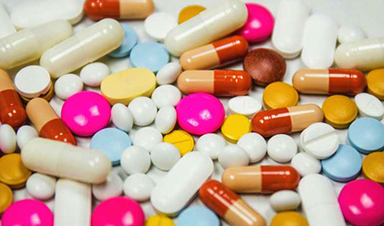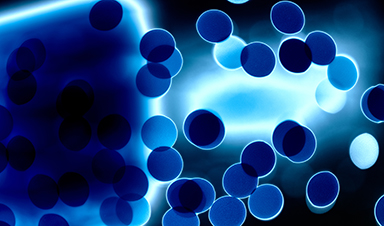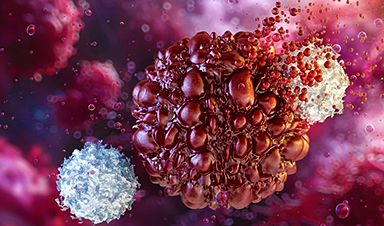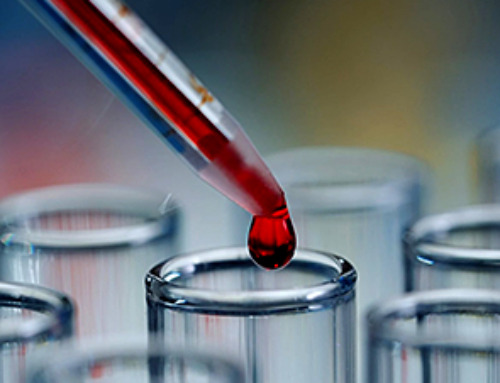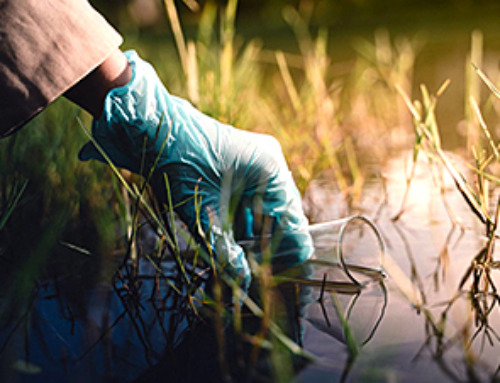Scientists at Nanyang Technological University, Singapore (NTU Singapore) have successfully grown ‘mini kidneys’ in the lab and grafted them into live mice, revealing new insights into the metabolic defects and a potential therapy for polycystic kidney disease.
“Mini kidneys,” or kidney organoids, are kidney-like structures grown in the lab using stem cells. In the study led by NTU’s Lee Kong Chian School of Medicine (LKCMedicine), researchers grew the organoids using skin cells derived from patients with polycystic kidney disease (PKD), a prevalent form of genetic condition that affects 1 in 1,000 individuals across all ethnicities.
People with PKD often progress to end-stage kidney disease between their 50s and 60s, with the standard treatment options available being dialysis or a kidney transplant. However, dialysis significantly compromises a patient’s quality of life, while a transplanted kidney can be challenging to acquire. One other option is the Food and Drug Administration (FDA) approved drug Tolvaptan, which is very costly and has severe side effects on the liver.
To address the need for more effective treatment for PKD patients, the NTU research team sought to better understand the disease by engrafting their newly developed mini kidneys into mice.
Previous studies were conducted on mini kidneys grown in a dish, which could only partly mimic the kidney structure and function. The NTU scientists engrafted the mini kidneys into live mice to comprehensively replicate the pathological features of kidney disease, including blood flow, fluid movement (tubular fluid) and cellular communication with other organs.
Lead investigator Assistant Professor Xia Yun at LKCMedicine said, “Engrafting the kidney organoid in mice provided us with a physiologically sophisticated approach to studying polycystic kidney disease as we were able to successfully emulate critical disease characteristics similar to those observed in human kidney patients.”
Critical disease characteristics included abnormalities like the spontaneous formation of cysts in the kidneys and the subsequent damage to its tiny tubes.
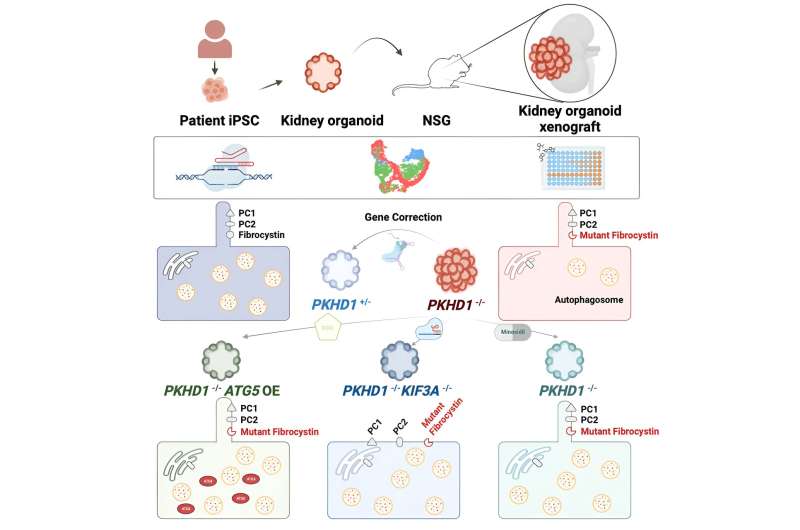
In their study, reported in the journal Cell Stem Cell, the NTU research team said that they believed their engrafted mini kidneys were high quality because cysts sustained without extra stress stimulation or chemicals, even after they were removed from the live mice for further investigations in a dish. In contrast, previous kidney organoids grown in a dish cannot form cysts without stress stimulation.
Co-investigator Assistant Professor Foo Jia Nee at LKCMedicine said, “The similarity between the disease manifestation observed in our engrafted mini kidney model and the real-life experiences of polycystic kidney disease patients suggest that growing kidney organoids and engrafting them into live mice could be beneficial in studying the disease and a useful tool to test new treatments.”
Metabolic defects in polycystic kidney disease
Scientists have long known that abnormalities in a structure on kidney cells, or the primary cilium, cause cysts to form in kidneys. However, tests to understand the regulatory mechanism and relationship between the primary cilium and cell metabolism (autophagy) in live mice with PKD, have not been possible until now.
By studying the development of PKD in live mice and testing cellular pathways, researchers found evidence that boosting autophagy could reduce the severity of cysts in the mini kidney.
After establishing that boosting autophagy could reduce cysts, the NTU scientists shortlisted 22 drugs known for their effects on cell metabolism and tested them in the lab. Results showed that minoxidil, a clinical drug widely used to cure hypertension and hair loss, effectively reduced cyst formation in the novel mouse model.
Asst Prof Xia Yun said, “Our study has demonstrated how cysts in polycystic diseased kidneys can be reduced by boosting autophagy, suggesting that this could be a promising treatment for PKD. Moreover, the proven clinical safety of minoxidil may allow it to be quickly re-purposed to treat PKD patients in clinic. However, more research will be needed to establish this potential.”
Commenting as an independent expert, Associate Professor Ng Kar Hui, Senior Consultant, Division of Paediatric Nephrology, Dialysis and Renal Transplantation, Department of Paediatrics, Khoo Teck Puat—National University Children’s Medical Institute, National University Hospital, said, “Polycystic kidney disease is one of the biggest causes of chronic kidney diseases among adults. An effective treatment may potentially ameliorate the rising numbers of people with kidney failure in Singapore. The establishment of such models in live organisms brings us one step closer to finding more treatment options.”
In future studies, the NTU team will test the efficacy of minoxidil and adapt the mini kidney models to investigate other burgeoning kidney diseases without a strong genetic underpinning, such as diabetic kidney disease.
More information: Meng Liu et al, Kidney organoid models reveal cilium-autophagy metabolic axis as a therapeutic target for PKD both in vitro and in vivo, Cell Stem Cell (2024). DOI: 10.1016/j.stem.2023.12.003
News
Researchers propose five key questions for effective adoption of AI in clinical practice
While Artificial Intelligence (AI) can be a powerful tool that physicians can use to help diagnose their patients and has great potential to improve accuracy, efficiency and patient safety, it has its drawbacks. It [...]
Advancements and clinical translation of intelligent nanodrugs for breast cancer treatment
A comprehensive review in "Biofunct. Mater." meticulously details the most recent advancements and clinical translation of intelligent nanodrugs for breast cancer treatment. This paper presents an exhaustive overview of subtype-specific nanostrategies, the clinical benefits [...]
It’s Not “All in Your Head”: Scientists Develop Revolutionary Blood Test for Chronic Fatigue Syndrome
A 96% accurate blood test for ME/CFS could transform diagnosis and pave the way for future long COVID detection. Researchers from the University of East Anglia and Oxford Biodynamics have created a highly accurate [...]
How Far Can the Body Go? Scientists Find the Ultimate Limit of Human Endurance
Even the most elite endurance athletes can’t outrun biology. A new study finds that humans hit a metabolic ceiling at about 2.5 times their resting energy burn. When ultra-runners take on races that last [...]
World’s Rivers “Overdosing” on Human Antibiotics, Study Finds
Researchers estimate that approximately 8,500 tons of antibiotics enter river systems each year after passing through the human body and wastewater treatment processes. Rivers spanning millions of kilometers across the globe are contaminated with [...]
Yale Scientists Solve a Century-Old Brain Wave Mystery
Yale scientists traced gamma brain waves to thalamus-cortex interactions. The discovery could reveal how brain rhythms shape perception and disease. For more than a century, scientists have observed rhythmic waves of synchronized neuronal activity [...]
Can introducing peanuts early prevent allergies? Real-world data confirms it helps
New evidence from a large U.S. primary care network shows that early peanut introduction, endorsed in 2015 and 2017 guidelines, was followed by a marked decline in clinician-diagnosed peanut and overall food allergies among [...]
Nanoparticle blueprints reveal path to smarter medicines
Lipid nanoparticles (LNPs) are the delivery vehicles of modern medicine, carrying cancer drugs, gene therapies and vaccines into cells. Until recently, many scientists assumed that all LNPs followed more or less the same blueprint, [...]
How nanomedicine and AI are teaming up to tackle neurodegenerative diseases
When I first realized the scale of the challenge posed by neurodegenerative diseases, such as Alzheimer's, Parkinson's disease and amyotrophic lateral sclerosis (ALS), I felt simultaneously humbled and motivated. These disorders are not caused [...]
Self-Organizing Light Could Transform Computing and Communications
USC engineers have demonstrated a new kind of optical device that lets light organize its own route using the principles of thermodynamics. Instead of relying on switches or digital control, the light finds its own [...]
Groundbreaking New Way of Measuring Blood Pressure Could Save Thousands of Lives
A new method that improves the accuracy of interpreting blood pressure measurements taken at the ankle could be vital for individuals who are unable to have their blood pressure measured on the arm. A newly developed [...]
Scientist tackles key roadblock for AI in drug discovery
The drug development pipeline is a costly and lengthy process. Identifying high-quality "hit" compounds—those with high potency, selectivity, and favorable metabolic properties—at the earliest stages is important for reducing cost and accelerating the path [...]
Nanoplastics with environmental coatings can sneak past the skin’s defenses
Plastic is ubiquitous in the modern world, and it's notorious for taking a long time to completely break down in the environment - if it ever does. But even without breaking down completely, plastic [...]
Chernobyl scientists discover black fungus feeding on deadly radiation
It looks pretty sinister, but it might actually be incredibly helpful When reactor number four in Chernobyl exploded, it triggered the worst nuclear disaster in history, one which the surrounding area still has not [...]
Long COVID Is Taking A Silent Toll On Mental Health, Here’s What Experts Say
Months after recovering from COVID-19, many people continue to feel unwell. They speak of exhaustion that doesn’t fade, difficulty breathing, or an unsettling mental haze. What’s becoming increasingly clear is that recovery from the [...]
Study Delivers Cancer Drugs Directly to the Tumor Nucleus
A new peptide-based nanotube treatment sneaks chemo into drug-resistant cancer cells, providing a unique workaround to one of oncology’s toughest hurdles. CiQUS researchers have developed a novel molecular strategy that allows a chemotherapy drug to [...]
